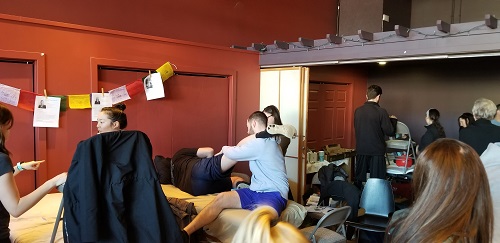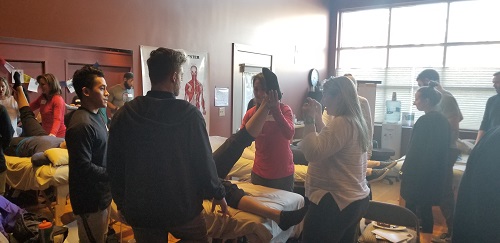One of the more rewarding aspects of teaching PRI to movement professionals who are new to the science is their transition from initial shock, to their minds being blown a little (or a lot), to when it starts to click for them and start to see the PRI picture.
This past weekend was one of those classes where the overwhelming majority of the attendees were new to the science of PRI. But it was also one of those classes where the overwhelming majority of the newcomers left understanding and appreciating how PRI, while challenging them in a good way, is an exceedingly necessary clinical tool for them. I have heard from several individuals in the days following the course as they express their gratitude to PRI for opening their mind and challenging their clinical perspective.
Myokinematic Restoration is a great entry point to start one’s PRI journey. We started our weekend by laying out the mechanical ramifications of the L AIC pattern, and how pathology may not be far behind. We then started our deep dive into neuromuscular behavior the Left AIC pattern puts us in, and how to get out of it.
One of the main points of emphasis we have been attempting to drive home in this course is not only how to perform the positional and functional testing, but to understand what the tests mean. And, more importantly, what to do with that information in order to properly decide which PRI non-manual activities to choose. As a result, we constructed our lab time to reflect that concept. We were very fortunate to be able to spend at least half of Sunday in lab. The feedback we were getting was that participants could still feel their L IC Adductor and R Gluteus Max on Monday! That sensation is very helpful for them as movement specialists in order to feel those muscles and how that made them feel as a result.
My thanks to Holli O’Kelley for her willingness to be our host. Her questions during the course were very helpful as well. My thanks to Barak Pearson, Kyle Sammons, and Young Filer for their interest and questions. My special thanks to Mary Faulk and Loren Johnson. Thank you for your openness and willingness to explore different treatment options. Thank you to Betsy Baker-Bold, PRC, for her assistance with our labs. The Seattle area has been growing rapidly in PRI interest over the last several years, and Betsy is one of the main reasons for that growth. This weekend reminded me how grateful I am to PRI, and how humbling it is, as an instructor, to help fellow clinicians explore this new science.





